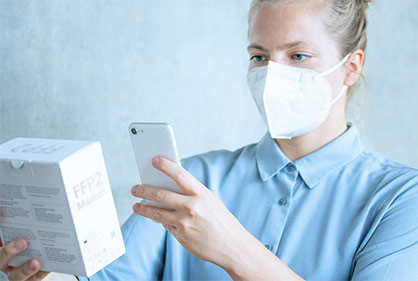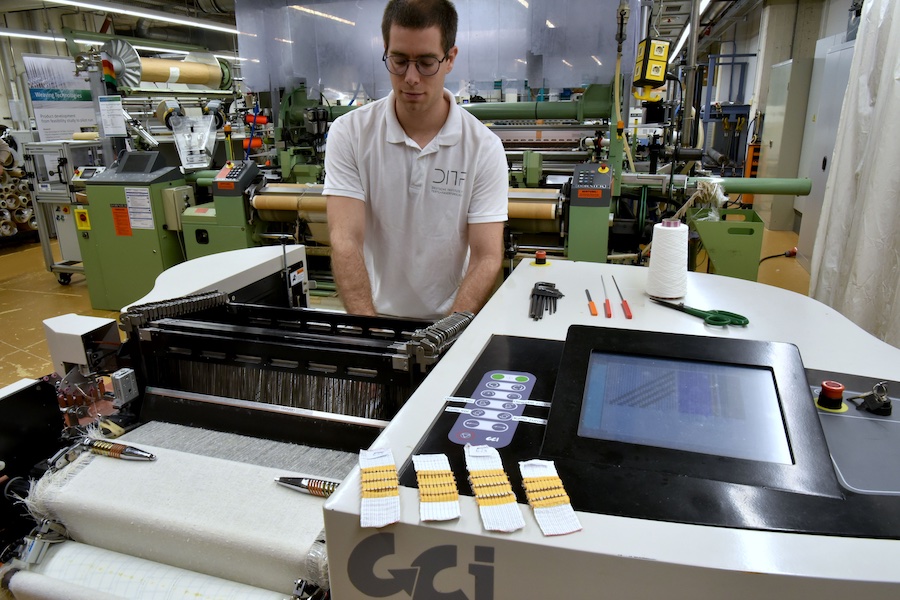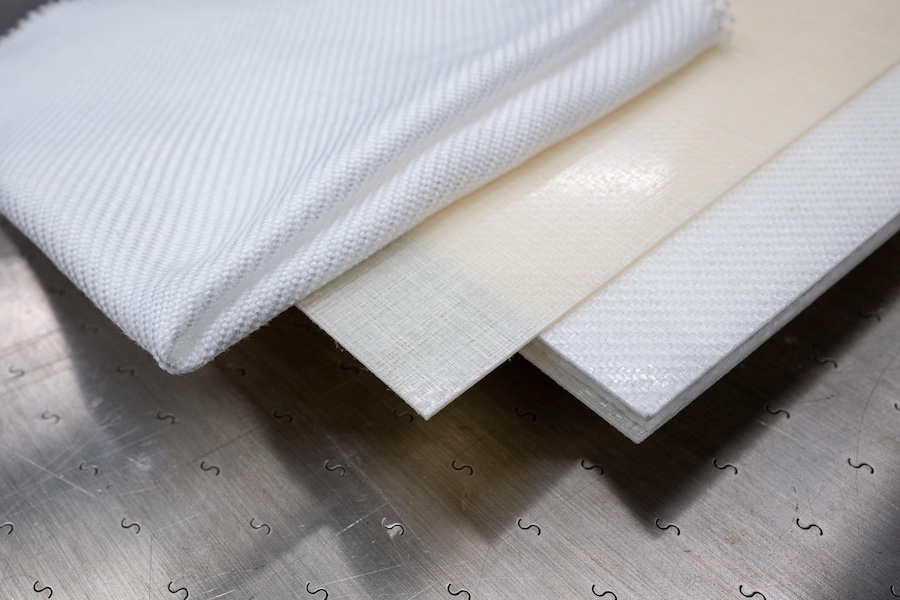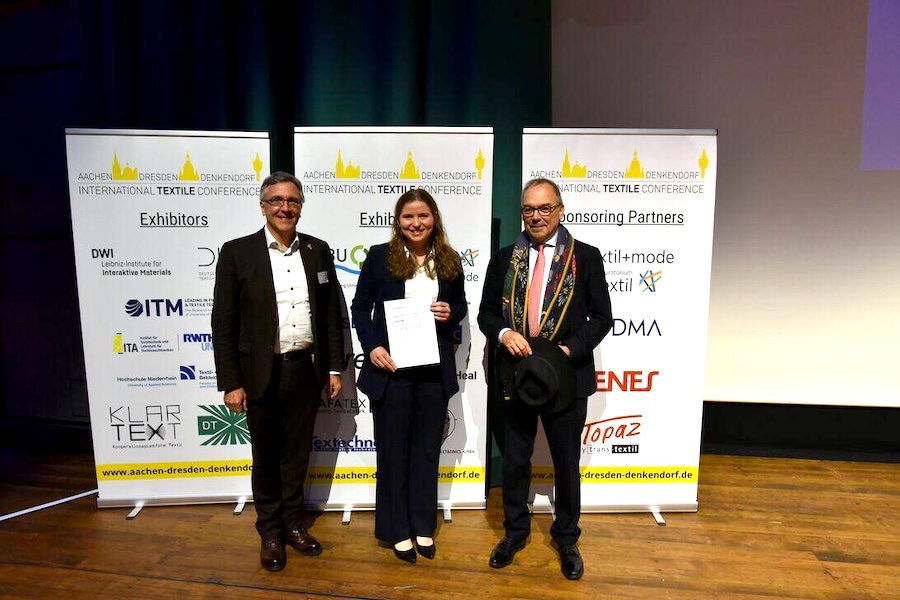#Research & Development
Original or fake? Counterfeit-proof and unique identification shows authenticity of products
Counterfeit or uncertified products circulate in large numbers in the market, among them FFP2 masks. Consumers often have no ability to verify the authenticity of a product. In the case of counterfeit medical products and pharmaceuticals, cosmetics and even food there can also be serious consequences for health.

Product authentication from the producer to the end customer
Comprehensive product protection can only be achieved through a system that ensures verifiability of product authenticity from the producer through customs, wholesalers and retailers to the end customer. "This is what we are striving for in the SmartID project. Everyone in this chain should be able to authenticate a product securely. We are taking advantage of the fact that many people have a smart device these days", explains Dr. Tobias Jochum, who coordinates the project and works as a specialist in anti-counterfeiting at the Hamburg Center for Applied Nanotechnology CAN, a research division of the Fraunhofer IAP.
In SmartID, each product will be labeled as unique and authentic. To this end, the scientists involved are bringing together materials science expertise with cutting-edge software. Fraunhofer IAP is developing novel materials for counterfeit-proof labeling that can be detected via smart devices. The Fraunhofer Institutes SIT and FOKUS are developing special software for reading and encrypting this physical marking. Further, an app will be developed allowing the customers to verify the product via their smart devices.
Use of existing track & trace infrastructure, but without database
With their identification, the partners are building on existing track & trace barcodes. SmartID is designed so that QR codes, Data Matrix codes and all other ISO-normed barcodes can be used and read using a smart device. But contrary to the conventional approach, users can also check the authenticity verification without database matching. "This offers several advantages: On the other hand, with SmartID we avoid various IT security and data protection challenges that arise when using a central database, as well as the high costs associated with installing, commissioning and maintaining databases", says Jochum.
In the first phase of the project, the partners are focusing on establishing secure and unique identifiers on product packaging and optimizing processes in terms of costs. One goal here is to print SmartID identifiers on packaging using conventional printing technologies. In further developments, SmartID could also be integrated directly into products.
Strong partners from industry
SmartID is supported by an industrial advisory board that brings different expertise along the entire value chain. The partners include REA Elektronik GmbH, DNV, Domino Printing UK and the Mechanical Engineering Industry Association. "While in the past almost exclusively IT solutions were established, SmartID also takes into account the physical component of counterfeit protection and combines it with the best possible IT security", says Steffen Zimmermann of the Mechanical Engineering Industry Association.













